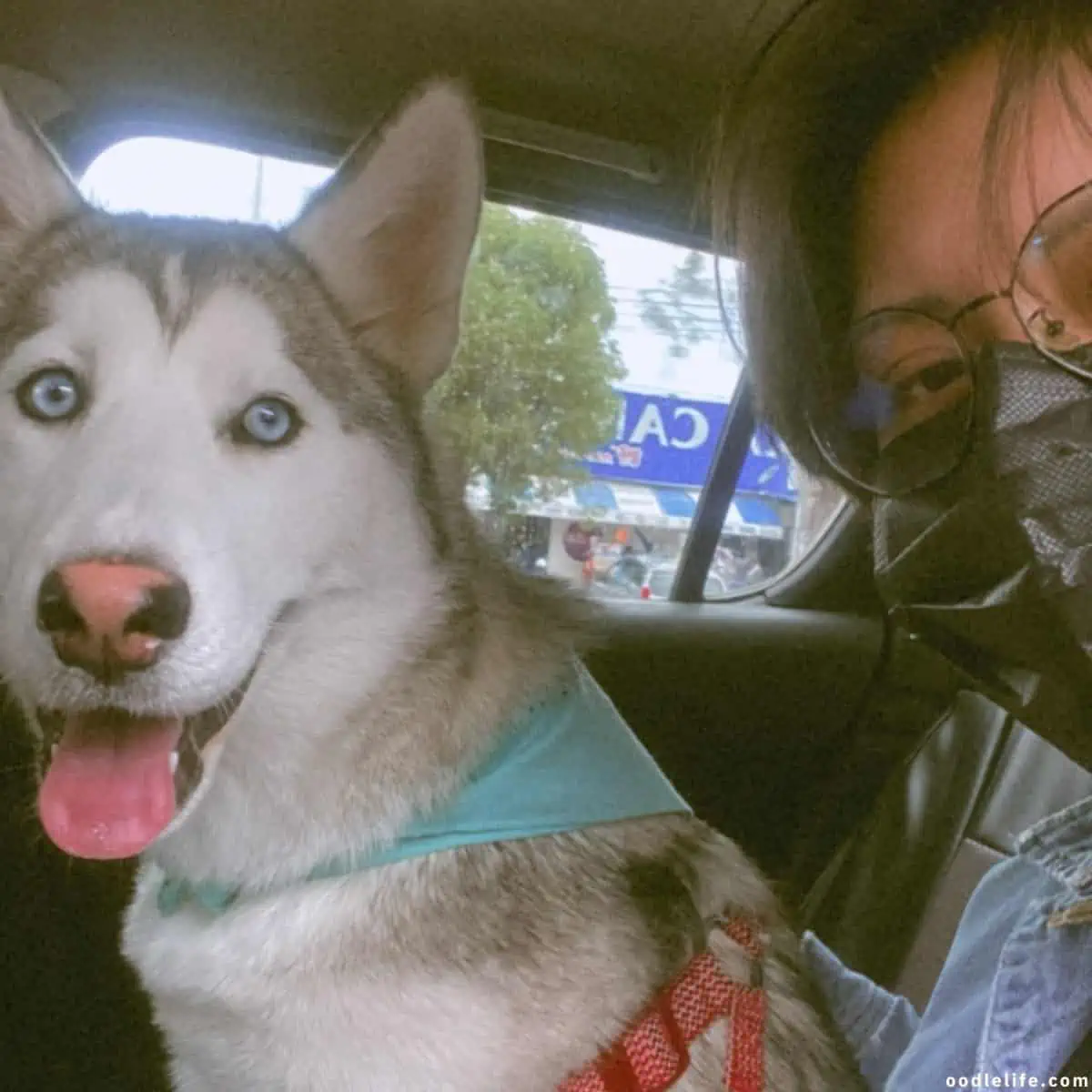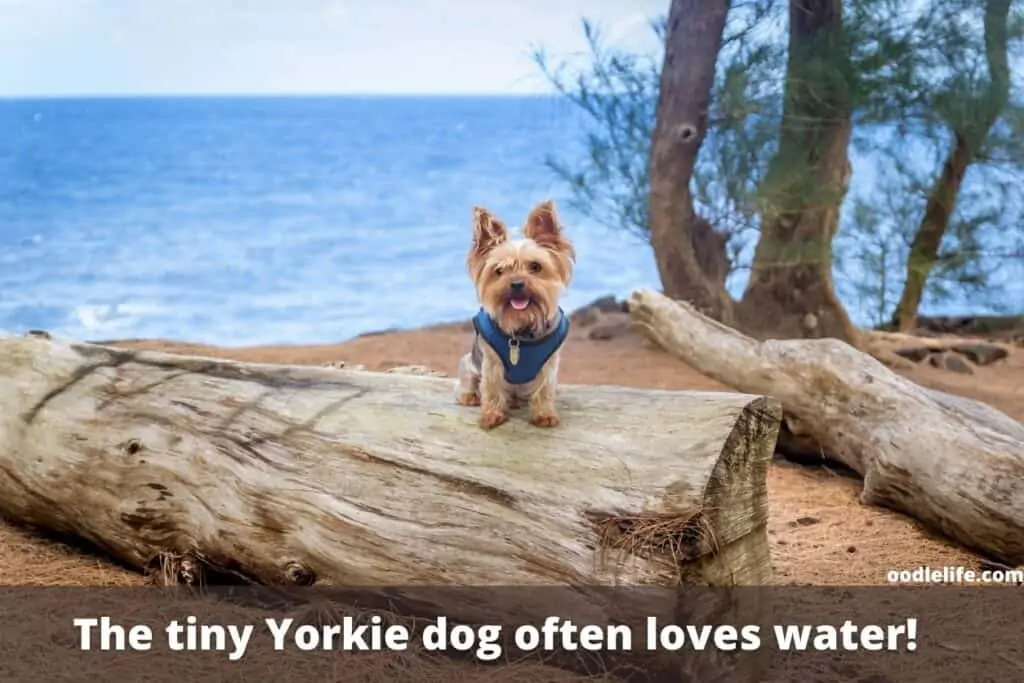My Dog Is Suddenly Scared of Car Rides! [Why]
When you’re a dog owner, putting your pup in the back seat and riding around town can be a fun adventure for both you and your pet. From playing in the park to going to the groomers, you need to be able to pack your pup away in your car and zoom off to wherever the open road takes you.
The experience of a dog suddenly being scared of car rides happens all the time. As a dog expert, I get emailed this question at least every few months!
Unfortunately, some dogs are terrified of car rides. What’s even stranger, sometimes dogs who have been perfectly fine in the car before can develop fears of car rides later into adulthood.
Fear not! There are steps you can take to help get your dog back into the car for a pain-free and even enjoyable experience for everyone in the vehicle.
In this article we talk about
- Why does your dog hate the car
- How to prevent dog motion sickness
- How to prevent dog car anxiety
- And which breeds to best with regular car rides
Why Does My Dog Hate The Car?
Usually, dogs dislike being in the car for one of two reasons: motion sickness or anxiety.

Younger puppies seem to be more prone to nausea and car sickness (because the part of the ear that helps with their balance is not fully developed), older dogs can suffer from motion sickness, too. Motion sickness can make your dog feel dizzy and nauseous to the point of vomiting in your car.
Another reason could be travel anxiety. If your dog had a poor memory in the car recently (like if your dog was in the vehicle during an accident), this could stick with your dog to the point where they associate car trips with this anxious feeling.
Whether it’s motion sickness or anxiety, you can typically tell if your dog is experiencing either or by these symptoms:
- Lethargy
- Repeated yawning
- Whining
- Panting
- Lip-licking
- Excessive drooling
- Uneasiness
- Unusual stillness
- Vomiting
How to Prevent Dog Motion Sickness
Here are a few tips to alleviate motion sickness while driving. The first is to keep the temperature in the car cool. Like with humans, the cooler the air, which helps soothe feelings of nausea and dizziness. In the same token, you should try to lower the windows to allow for as much fresh air as possible.

You also may want to limit how much food and water your dog consumes before the trip. A full stomach can only increase the feeling of nausea. Plus, if your dog does have an accident, this means less cleanup.
Before the trip, you may want to exercise your dog. Large amounts of exercise can help decrease stress but also if you exercise them enough, you may make them tired enough to fall asleep during the trip.
How To Alleviate Dog Anxiety
While preventing motion sickness is all about taking steps before the car ride, helping curb dog anxiety is all about what you do during the ride itself.

The key to soothing dog anxiety is all about retraining. It’s important that you reinforce positive experiences to replace anxiety and fear with positive, enjoyable memories.
To start, you should keep treats in the car whenever your dog accomplishes something that gives them anxiety. If they become anxious by just seeing the car, walk them out to the driveway and give them treats for just being near the vehicle. Slowly build your way up until your dog can comfortably ride in the car with you.
However, it’s important to note that you should never force them into the car. They should always enter the vehicle on their own terms once they feel comfortable. Going from being near the car to actually entering the car may be a long process. Make sure to treat your dog with patience and kindness as they work through this issue. Dogs are very sensitive creatures and are attuned to our emotions; if they sense you feeling upset or impatient, this will be detrimental to the entire process.

Once your dog feels safe in the car, you can begin by taking small trips around the neighborhood. Make sure to keep those treats handy; you’ll need them for when the anxiety flares back up again. Most dogs have anxiety when it comes to bumpy roads, speed bumps, or rumble strips. Make sure to anticipate these areas in the road and detour around them at first if your dog is really struggling.
In addition to treats, it also is a good idea to keep something familiar in the car, like an old blanket or favorite toys. You can also have other family members keep your dog calm during the first few trips.
Eventually, if you take things slow, your dog should become more accustomed to driving in the car. Again, dogs are very sensitive to their owner’s moods, so make sure to keep your demeanor calm and composed to help keep their anxiety levels down.
Medical Solutions
Sometimes dogs need help beyond simply rolling down windows or using treats to help with anxiety. If you need to take it a step further, you can reach out to your vet for assistance.

If your dog has severe motion sickness, there are a few medications that your vet can prescribe to help soothe some of their symptoms.
Interestingly enough, dog pheromones have also been known to help alleviate anxiety in some cases. A dog appeasing pheromone is secreted from their glands can have calming effects on not only young dogs but also older dogs.
In fact, dog-appeasing pheromones have been reported to reduce separation-induced anxiety, general anxiety for puppies placed in new environments, anxiety during transportation and car rides, stress from being in a public shelter, stress from police training, and stress from puppies who are learning how to socialize.
You can purchase these pheromones in a variety of forms. While they’re most common in collars, you can also buy diffusers and sprays. If you think your dog is struggling from severe anxiety, talk to your vet about trying this option. If your vet thinks it can help, you can spray the inside of your vehicle before your trip to have a smooth car ride from start to finish.
Best Breeds For Car Rides
While anxiety and motion sickness don’t discriminate between breeds, some dogs are more relaxed than others. Some breeds are also genetically disposed to having a better time in cars.

For example, breeds who have a more challenging time breathing than other breeds (such as dogs with short snouts) can suffer from motion sickness more than breeds with longer noses. Additionally, if your dog is too small and gets bounced around the car during sharp turns, this also can contribute to them having more car sickness than breeds that are a bit more sturdy.
If you own a smaller breed, you may want to buckle them into a harness or dog seat to reduce the amount that they are thrown around in the car.
On the opposite end of the spectrum, larger dogs can be uncomfortable in cars, too. Huge dogs (like Great Danes) may have difficulty finding a comfortable position in your vehicle. As a result, their anxiety might spike – especially if they feel like they’re trapped in a tight space for an extended period of time.

In short, every dog is different, and every dog presents their own unique challenges and hurdles. It’s all about finding the right solution for your pet to make their car ride as easy and as enjoyable as possible.
Final Thoughts
Whether your dog is suffering from motion sickness or anxiety, an upset dog isn’t fun for anyone. If you think your dog is suffering from motion sickness, you can try to roll down the windows or medicate them to try to alleviate the nauseousness.
If your dog has anxiety, it may take a while, but retraining your dogs with treats and positive rewards is generally a successful method. But if your dog has serious fears of cars, you may want to take your dog to the vet to get them some prescribed medication.